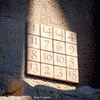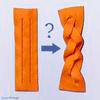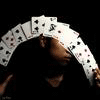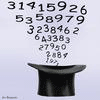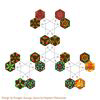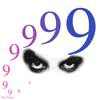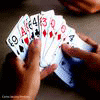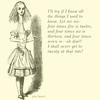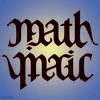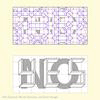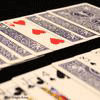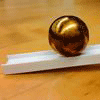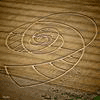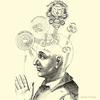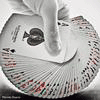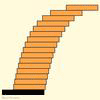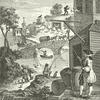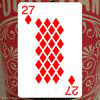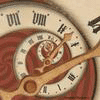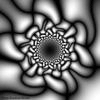Mathematics Awareness Month 2014: Mathematics, Magic, and Mystery
Navigate the Calendar
Bob Hummer’s Ten Card Trick
Here is computer scientist, magician, and puzzle collector Christopher Morgan, performing and then explaining a magic trick that uses 10 cards. The effect is the work of the eccentric magical genius Bob Hummer, who was a friend of Martin Gardner’s.
Taking it Further
An Encore Effect
Here’s a great encore to this trick. Offer to repeat it, but this time first arrange the 10 card packet so they alternate face-up and face-down. Now perform the trick as shown in the video, but before the spectator deals the cards into two piles and turns one pile over onto to the other, have them first reverse the top card and put it back on top of the packet, remembering its name. They can cut the packet if they like. Now, after the final dealing and turning, all of the cards will be facing in one direction, except the card your spectator reversed! Can you figure out how this works?
An Eight Card Effect
Here is an eight card trick which at first may seem unrelated to the 10 card trick shown above. It is the creation of Martin Garder, who described it thusly in a personal correspondence to Colm Mulcahy:
Here’s a curious card effect I based on the first problem in Peter Winkler’s book Mathematical Puzzles: A Connoisseur’s Collection (A.K. Peters, 2003). Eight cards are dealt face up from a shuffled deck to form a row. Players take turns removing a card from either end of the row. The person whose cards have the higher sum is the winner. To speed up the game, face cards count as 10. You always go first. It seems like a fair game, but you have total control, not only over who wins, but who wins by a precise number of points! It’s what carnies used to call a “two-way” game, because you can always allow your opponent to win. Moreover, you can always predict the exact number of points by which a game is won!
For example, you can say, “I’ll win this game by n points.” Or “This time you will win by n points.” Or “This game is sure to be a draw.”
Can you determine how to make the trick work? Here’s a hint: It has everything to do with parity: which cards are in the even- and odd-numbered positions in the row.
The Underlying Mathematics
As Morgan explains in the second video, Bob Hummer’s 10 card trick presents a mixing process which appears to be random, but which in fact preserves some order at each step. In particular, the cards in the odd positions always match those in the even positions—each group has the same number of face-up cards. These groups are separated into two piles, and one pile is flipped over. The flipping is a parity-switching move: Face-up cards become face-down, and vice-versa. So if there were k face-up cards in both piles initially, there will be (5 - k) face-up cards in the flipped pile. When the piles are combined, there are therefore k + (5 - k) = 5 face-up cards.
The “Encore Effect” mentioned in the previous section makes use of the special starting configuration where the cards in odd positions all face one way, and the cards in even positions all face the other. When the spectator flips a single card, it becomes the only card facing that direction after the two groups are separated into separate piles and one pile is turned over.
One may perform this trick with any even number of cards. We chose 10 because its digits, zero and one, are often used in mathematics to represent even and odd numbers, respectively. How appropriate for the 10th day of the month!
Several variants of Hummer’s 10-card trick are discussed in chapter 1 of Magical Mathematics: The Mathematical Ideas That Animate Great Magic Tricks, by Persi Diaconis and Ron Graham (Princeton University Press, 2012).
Just as Hummer’s 10 card trick will work with any even number of cards, so too will Gardner’s eight card trick. The key there is for the performer to discretely sum the face values of the cards in the odd positions, and then do the same for the cards in the even positions. The difference between those sums is the amount by which the winner’s score will exceed the loser’s score. Since the performer goes first, he draws from the left side to obtain a card in the odd group, or from the right if he desires a card from the even group. His opponent is then forced to draw a card from the opposite group. With some care, the performer is always able to take cards from his chosen group, and force his opponent to do the opposite.
Hummer’s 10 card trick as presented here is a slight variation of the description given in Martin Gardner’s Mathematics, Magic and Mystery (Dover, 1956). See “Hummer’s Reversal Mystery” on page 17. Gardner’s eight card trick was first described in Colm Mulcahy’s Card Colm blog in June, 2006 under the name “Martin Gardner’s Coins to Cards Effect.”



